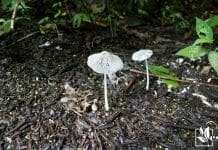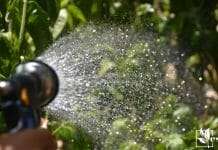Winter can pose a significant challenge for outdoor plant enthusiasts who wish to keep their garden green throughout the cold months. It’s vital to employ specific strategies to protect your plants from frost, snow, and freezing temperatures. I’ve discovered a few key practices that enable plants to not only survive but sometimes thrive during winter. Understanding the resilience and requirements of your garden’s flora is the first step in ensuring their longevity.

I ensure the survival of my plants by selecting winter-hardy varieties, providing proper insulation, and employing protective measures against cold and pests.
Timing is crucial when transitioning seasonal care. As the weather cools, I begin by relocating potted plants indoors or to sheltered areas. For the plants in my garden, I recommend trimming dead leaves and adding layers of mulch to preserve root warmth. Additionally, I keep vigilant for pests that may harm the plants during their vulnerable states. My personal triumphs in plant care during winter boil down to preemptive and responsive actions tailored to the ever-changing climate.
JUMP TO TOPIC
Preparing Plants for Winter
As winter approaches, it’s crucial to prepare your plants for the drop in temperature and the upcoming dormancy period. Proper mulching, adjusting watering techniques, and understanding plant dormancy are essential steps to ensure your green friends emerge healthy in the spring.
Understanding Plant Dormancy
💥 Dormant Period
Most outdoor plants enter a dormant state during winter. This is a survival strategy where growth and metabolic activity slow down. Preparing for dormancy involves gradually reducing watering as temperatures drop, allowing plants to harden off and increase their cold tolerance.
The Role of Mulching
Mulch acts as an insulating blanket for soil and roots. By applying a layer of mulch around your plants, I help maintain soil temperature and moisture levels. The mulch also prevents freeze-thaw cycles that can heave and damage root systems. Organic materials like straw, leaves, or bark chips are excellent mulching options.
Watering Techniques Before Frost
Watering plays a critical role before the first frost. The goal is to ensure that the soil around your plant’s roots is moist but not waterlogged. I generally provide a deep watering to outdoor plants before a freeze, which helps insulate the soil and provides the necessary moisture for root systems during the winter months.
Beware of overwatering, as this can lead to root rot, especially in cold, damp conditions.
Protecting Sensitive Species
In caring for outdoor plants during the cold months, understanding the unique needs of sensitive species is crucial. I’ll guide you through the steps for tropical plants, overwintering potted plants, and the use of protective covers to ensure your garden’s resilience against winter’s challenges.
Special Care for Tropical Plants
Tropical plants are particularly vulnerable to frost damage. I always ensure they are planted in a sheltered spot to minimize exposure to cold winds and frost.
Applying an extra layer of mulch around the base can provide necessary insulation to keep the root system warm. Wrapping sensitive species in burlap or frost blankets may also be necessary to shield them from the coldest temperatures.
Overwintering Potted Plants
Potted plants need special attention since their roots are more exposed to the elements. I move my planters to a protected area, close to the house, where heat can radiate from the walls. If the planters aren’t too large, I bring them indoors.
| Material | Benefits | Use Case |
|---|---|---|
| Bubble wrap | Insulation | Wrap around pots |
| Burlap | Protection from cold | Cover plants |
| Mulch | Root insulation | Apply on soil surface |
Using Protective Covers Effectively
Adequate coverage is vital for plant survival. Fabric covers, such as row covers, must be secured properly to protect plants from freezing temperatures. Frost blankets should be employed on nights when a frost is expected, making sure to remove them during the day to allow sunlight and air circulation.
I’ve found that creating a simple framework around the plants can prevent the cover from touching the foliage. It is important to note that the fabric must extend down to the soil on all sides to trap heat effectively.
Maintaining Plant Health in Cold
To ensure your plants thrive during the colder months, specific care in pruning, fertilization, and pest control is essential.
Optimal Pruning Methods
My experience has led me to prune before the first frost. I focus on removing dead or diseased branches to avoid unnecessary stress on the plants. Pruning promotes better air circulation, which is crucial for minimizing disease risk during damp winter conditions. Always disinfect your tools to prevent spreading diseases.
Choosing the Right Fertilizer
I refrain from fertilizing in the cold months since plants are typically dormant and excess nutrients can leach into waterways. If plants show signs of nutritional deficiencies, I apply a balanced, slow-release fertilizer in late autumn to help them during the winter. It’s important to ensure the soil is not frozen when applying fertilizer to support root development.
Pest Prevention Strategies
Pests can be rampant, even in cooler weather. I rely on properly timed insecticidal soap applications, targeting overwintering pests. Clearing away fallen foliage and debris reduces habitat for insects to nest and overwinter, mitigating the risk of infestations. Monitoring and early intervention are key in my pest control strategy to prevent damage when spring arrives.
Maintaining plant health during cold weather is all about tailoring your approach to the dormant state of your plants, protecting them from harsh conditions, and preventing disease and pests.











